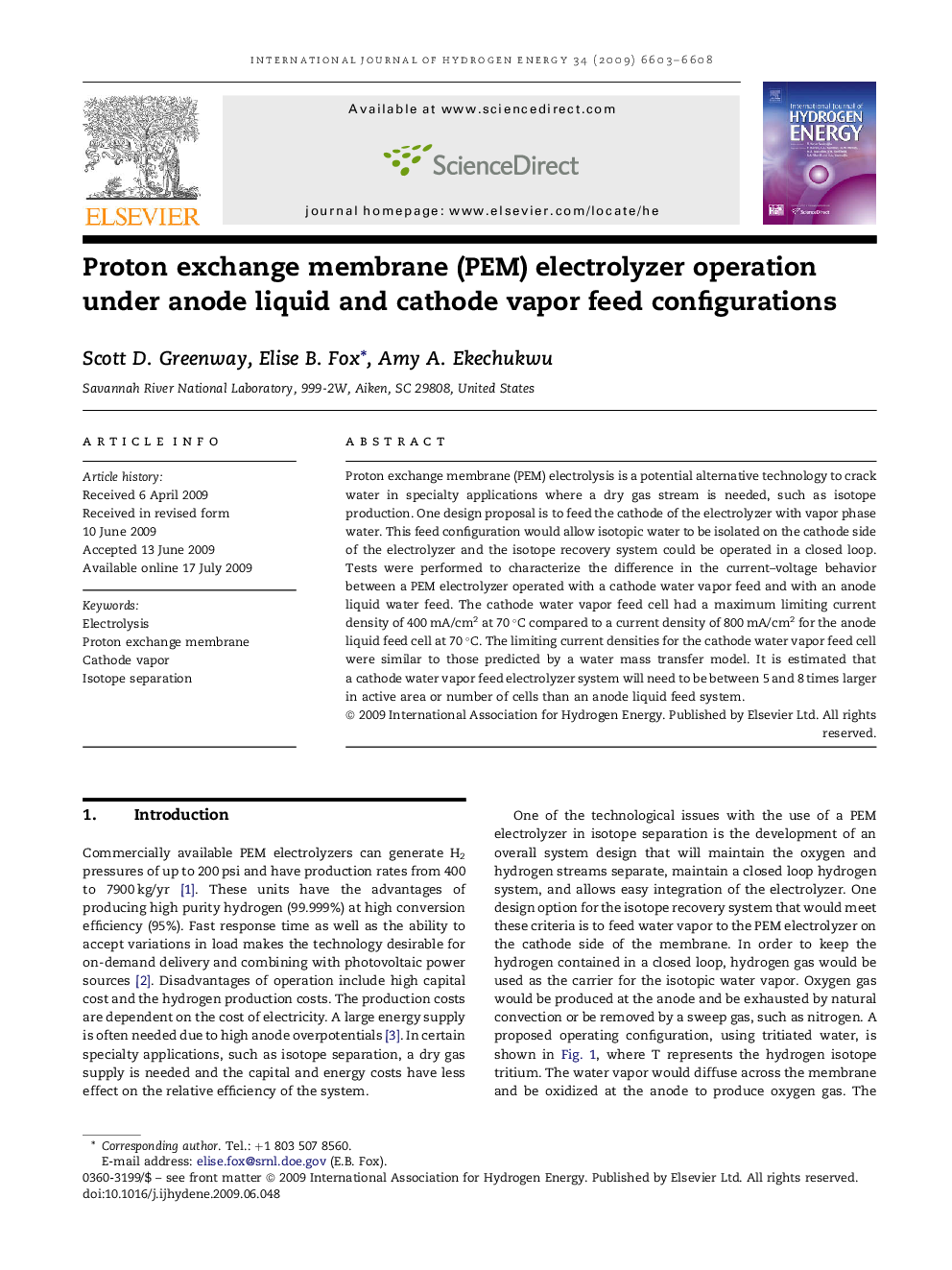| Article ID | Journal | Published Year | Pages | File Type |
|---|---|---|---|---|
| 1277615 | International Journal of Hydrogen Energy | 2009 | 6 Pages |
Proton exchange membrane (PEM) electrolysis is a potential alternative technology to crack water in specialty applications where a dry gas stream is needed, such as isotope production. One design proposal is to feed the cathode of the electrolyzer with vapor phase water. This feed configuration would allow isotopic water to be isolated on the cathode side of the electrolyzer and the isotope recovery system could be operated in a closed loop. Tests were performed to characterize the difference in the current–voltage behavior between a PEM electrolyzer operated with a cathode water vapor feed and with an anode liquid water feed. The cathode water vapor feed cell had a maximum limiting current density of 400 mA/cm2 at 70 °C compared to a current density of 800 mA/cm2 for the anode liquid feed cell at 70 °C. The limiting current densities for the cathode water vapor feed cell were similar to those predicted by a water mass transfer model. It is estimated that a cathode water vapor feed electrolyzer system will need to be between 5 and 8 times larger in active area or number of cells than an anode liquid feed system.
